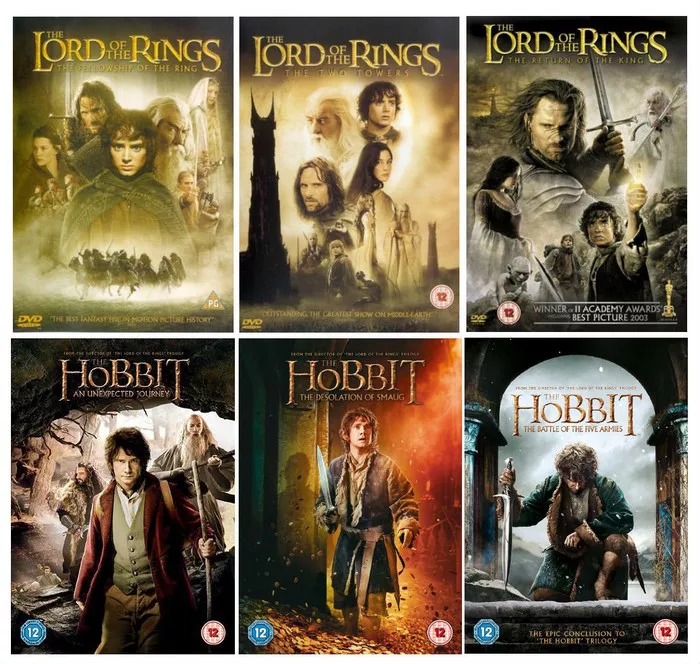Embarking on a literary expedition through J.R.R. Tolkien’s Middle-earth is a journey filled with wonder, peril, and profound storytelling. In this article, we embark on a quest to uncover the differences between two iconic works— “The Lord of the Rings” and “The Hobbit.” With a focus on narrative complexity, thematic depth, and character arcs, we explore the unique qualities that distinguish these masterpieces in the realm of fantasy literature. As we traverse the landscapes of Middle-earth, the narrative unfolds to illuminate the varied hues that make each tale a distinct and indispensable contribution to the rich tapestry of Tolkien’s legendarium.
The Hobbit: An Enchanting Prelude to Adventure
Bold Beginnings: A Single Heroic Quest
“The Hobbit,” published in 1937, introduces readers to the world of Middle-earth through the eyes of Bilbo Baggins. The narrative centers around Bilbo’s unexpected journey with a company of dwarves led by Thorin Oakenshield. Their quest is to reclaim the Lonely Mountain and its treasure guarded by the formidable dragon Smaug. The simplicity of this singular quest sets “The Hobbit” apart, offering a more straightforward and whimsical narrative.
Whimsy and Wonder: A Lighter Tone
One of the defining characteristics of “The Hobbit” is its lighter and more whimsical tone. The story unfolds with a sense of childlike wonder, blending adventure with humor. Bilbo’s encounters with trolls, goblins, and the enigmatic Gollum contribute to the fairy-tale atmosphere that permeates the narrative. This lighter tone makes “The Hobbit” an ideal entry point for readers new to Tolkien’s works.
The Lord of the Rings: Epic Scale and Mythic Proportions
Expansive Ambitions: A Tapestry of Interwoven Narratives
“The Lord of the Rings,” published in three volumes between 1954 and 1955, represents a monumental expansion of Tolkien’s storytelling. The narrative unfolds across multiple storylines, each following different characters and converging toward the overarching quest to destroy the One Ring and defeat the dark lord Sauron. This multifaceted approach adds layers of complexity and depth to the narrative.
Mythic Undertones: Themes of Power, Sacrifice, and Heroism
While “The Hobbit” focuses on the singular quest for treasure, “The Lord of the Rings” explores profound themes of power, sacrifice, and heroism. The One Ring becomes a central symbol of corruption and temptation, and the characters are confronted with moral dilemmas and the weight of destiny. The epic scale of the narrative elevates “The Lord of the Rings” into a mythic saga with far-reaching implications for the entire world of Middle-earth.
Comparative Merits: Unveiling the Nuances
Character Development and Complexity
“The Hobbit” excels in character development within a more contained narrative. Bilbo Baggins undergoes significant growth from a timid hobbit to a reluctant hero. The simplicity of the story allows for a deep exploration of Bilbo’s character, making him a relatable and endearing protagonist.
In contrast, “The Lord of the Rings” introduces a vast ensemble of characters, each with intricate motivations and arcs. Frodo Baggins, Aragorn, Samwise Gamgee, and Gollum, among others, contribute to a narrative that delves into the complexities of heroism, friendship, and the moral challenges posed by the One Ring.
World-Building and Cultural Exploration
While both works showcase Tolkien’s unparalleled world-building skills, “The Hobbit” introduces readers to the enchanting realms of Middle-earth with a focus on the journey through the Misty Mountains, Mirkwood Forest, and the Lonely Mountain. The cultural depth and extensive exploration of Middle-earth’s history and languages are more pronounced in “The Lord of the Rings.”
Tone and Atmosphere
“The Hobbit” maintains a more whimsical and lighthearted tone throughout its narrative. The encounters with fantastical creatures and the witty exchanges between characters contribute to an atmosphere of adventure and discovery.
“The Lord of the Rings,” on the other hand, adopts a more mature and somber tone. The weight of the Ring’s power, the looming threat of Sauron, and the sacrifices made by the characters create a narrative atmosphere that explores deeper themes with a sense of gravitas.
Conclusion: Celebrating the Diversity of Middle-earth
In conclusion, the differences between “The Hobbit” and “The Lord of the Rings” extend beyond mere variations in narrative style and tone. Each work occupies a unique space within Tolkien’s legendarium, offering distinct experiences to readers. “The Hobbit” serves as a charming prelude, inviting readers into a world of whimsy and adventure, while “The Lord of the Rings” expands the horizons of Middle-earth into an epic saga, exploring the profound and mythic aspects of Tolkien’s creation.
The richness of Middle-earth lies in its diversity, and both “The Hobbit” and “The Lord of the Rings” contribute essential threads to the intricate tapestry of Tolkien’s imagination. As readers traverse the landscapes of Bilbo’s unexpected journey and Frodo’s quest to Mount Doom, they become part of a literary legacy that has captivated hearts and minds for generations. In celebrating the differences between these two masterpieces, we find a deeper appreciation for the multifaceted brilliance of J.R.R. Tolkien’s storytelling prowess.

